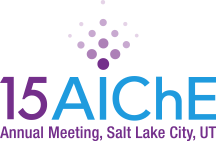

The crystallization of a potent compound, hereafter refered to as compound A for the sake of confidentiality and currently in development at GlaxoSmithKline proved to be challenging in terms of obtaining acceptable yield, consistent and desirable API powder properties, and a good process robustness and scalability. In order to address these issues, the salt formation crystallization was redesigned and a relatively novel approach was developed that allowed significant improvement in yield (from ≈70% to ≈95%), consistent API powder attributes within the desired range and an improved process manufacturability. This presentation describes the approaches and the process design of the crystallization recipe which utilizes a seed bed of the base as mitigating factor to prevent spikes in supersaturation with respect to the salt. The new process design resulted in a relatively novel crystallization path, which is a direct result of the solubility behaviors of both the base and the salt. The process was scaled-up successfully in the pilot plant to manufacture material for clinical supply.
